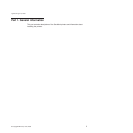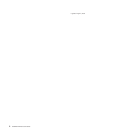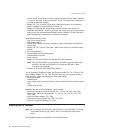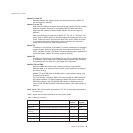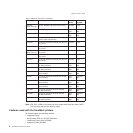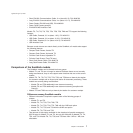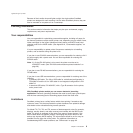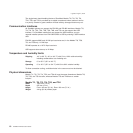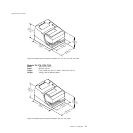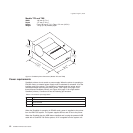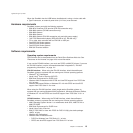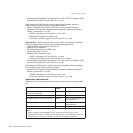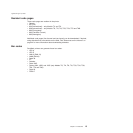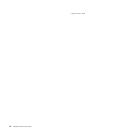
Because of their smaller size and lighter weight, the single-station SureMark
printers are designed for wall mounting. Like the other SureMark printers, they can
also be mounted on a system unit or a countertop.
Planning information
This section contains information that helps you plan your environment, supply
requirements, and power requirements.
Your responsibilities
You are responsible for replenishing consumable supplies, including roll paper for
the thermal (customer receipt station) printer, and, depending on your model, forms,
ribbon cartridges for the impact (document insert) station, and MICR read head
cleaning cards for the MICR reader. (See Appendix A, “Consumable supplies,” on
page 81.)
It is your responsibility to update printer firmware as needed prior to installing
printers, and as desired during the printer’s life.
If you plan to use EIA-232 communications, you are responsible for ordering a 24 V
dc power supply with a power cord. You are also responsible for ordering the
EIA-232 cable.
Note: If a 3-wire EIA-232 cable is to be used, the printer must be set to
XON/XOFF mode. (See “EIA-232 communications protocol selection” on
page 28.)
If you plan to use RS-485 communications, you are responsible for ordering the
RS-485 cable.
If you plan to use USB communications, you are responsible for ordering one of the
following:
v A powered USB cable. The 3.8-m USB cable for a distributed configuration is
P/N 40N4716 and the 0.5-m USB cable for an integrated configuration is P/N
40N4715.
v A standard USB cable, P/N 40N4767, with a Type B connector for the printer,
and a power brick.
With SureMark printer models you can use an electronic journaling
application. Electronic journaling eliminates the need to store paper journal tapes
and the time-consuming task of searching papers should the need arise.
Limitations
SureMark printers have a safety feature which slows printing if excessive duty
cycles are used. This feature protects the printer hardware from potential damage
and should not be noticeable during normal operation.
For Model TI2, TI4, TI8, and TI9, sources of electromagnetic noise (for example,
displays, security towers, and other sources) can interfere with the MICR read
head. The printer is equipped to filter noise from many of these devices. If the
MICR reader does not function properly, rearranging the printer relative to the
device may improve MICR reading. The noise source should be as far away as
possible from the right side of the printer. For additional information on
troubleshooting MICR reader problems, see “Offline tests” on page 62.
Updated April 2, 2009
Chapter 1. Introduction 9



